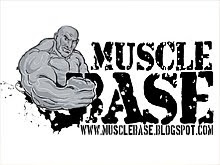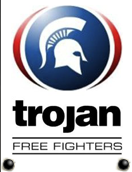
Have you ever eaten a meal, or slammed a carbohydrate drink before you trained, to find yourself feeling lethargic mid-way through your workout?
Well if you do, chances are you are experiencing a slight condition known as Hypoglycemia (low blood sugar). Increased insulin levels in the blood can attribute to low blood sugar, which often occur after the consumption of certain carbohydrates.
Let me use the habit of an average trainer or bodybuilder drinking a sugar-filled fizzy drink or high-glucose carbohydrate drink before a 2-hour work out, and the effect it has on the body. What usually happens is that most people during the middle of the day, or when they are feeling tired, grab a quick coke (or Carb drink for body builders) in the attempt to get that "Pick me up" that they need.
Sugar Rush vs. Sugar Crash
In actuality it harms them. After the soda or carbohydrate drink is ingested by itself, it rushes the body with an ample supply of carbohydrates.
Your body recognizes this surge of sugar and releases the hormone insulin to regulate blood sugar levels in the blood. So for a short while the person feels the sugar rush, or "High", that will shortly be followed by a sugar crash. The hormone insulin is then released by the pancreas into the blood. One of the main jobs of insulin is to take the high amount of glucose in the blood and shuttle it out of your blood into the liver, muscle, and then into fat storage. As a result, insulin will bring the blood sugar levels way down resulting in low blood sugar.
This crash in blood sugar is the reason for having the feelings of lethargy, mood swings, and increased hunger. The same thing happens to those consuming these high sugar carbohydrate drinks before a workout thinking they will receive a large boost in energy for their training session.
Insulin secretion and blood sugar levels all depend on the type carbohydrates you consume. Some carbohydrates are introduced quicker into the blood stream than others. The quicker a carbohydrate is released into blood stream, the higher the levels of blood sugar and insulin in the body. This leads to the rapid mood swings followed by decreased energy.
Simple vs. Complex
People have been terming different carbohydrates simple and complex. "Simple", being the carbs that hit the system faster than "Complex", which enters the system more slowly. The introduction of the Glycemic Index has proven to be beneficial in knowing the rates at which certain carbohydrates are released into the blood stream. The Glycemic index is a measure of how quickly a particular carbohydrate is formed into glucose and enters the body. The Glycemic Index has shown certain carbs known to be "Complex" actually absorb quicker than some carbs known to be "Simple".
The Glycemic Index (or GI) was originally brought about for those people who had Diabetes, but can be useful to many athletes looking for sustained energy and better recuperation. The GI is determined by feeding different carbohydrate foods to people in portions of 50g of available carbohydrates. The blood sugar levels are then monitored over the next three hours and plotted onto a response curve.
The curve is then made into a percent of the averages of the individual responses to obtain the GI for that particular carbohydrate. The more glucose that reaches the blood in the first three hours, the higher the GI for that carbohydrate. Thus, we can now group carbohydrates into "High Glycemic" and "Low Glycemic".
Low Glycemic Carbohydrates
Here is a preferred list of some of the foods that are "Low Glycemic", and are recommended for sustained energy levels (slower absorption, lowered insulin response):
Nuts
Legumes
Fructose (Basic sugar found in fruits)
Pasta (Boiled 5 min.)
Dairy ( Ice cream, skim milk, whole milk, yogurt)
Fruits (ONLY-plums, peaches, apples, oranges, pears, grapes, grapefruit)(contains fructose)
Rice (polished), or brown
Sweet potato
Oats
All-bran
Most Vegetables ( exceptions- carrots, corn, root vegetables)
Low GI foods can benefit your health and athletic performance. Being that low GI foods are assimilated at a slower rate, they supply a steadier supply of energy. Lower GI foods alleviate hunger, leading to a more controlled appetite. Selecting lower GI carbohydrates will prevent mood swings.
Lower GI foods can also result in higher muscle glycogen levels (storing more carbs in the muscle), and less chance of storing the extra glucose as fat. You see elevated insulin levels can turn on your fat storing mechanisms.
So, if you are dieting low GI foods are the way to go. If you are going to eat before training, you should pick low glycemic carbohydrates. Low glycemic foods will prevent any premature lowering of blood glucose levels before training, which can lead to fatigue. I don't know about you, but I need to be 100% for every workout, so I can't afford to experience low blood sugar in the middle of my workout causing early fatigue.
High Glycemic Carbohydrates
Here is a list of some of the foods that are "High Glycemic"(quickly absorbed, high insulin response):
Sugars (from high to low: Maltose, Glucose, Sucrose)
Honey
Puffed cereals (white rice, wheat, corn, rice cakes)YES! RICE CAKES
Potatoes ( regular russet, instant, mashed)
Sweets
Breads (especially white bread)
Instant products ( instant: rice, oatmeal, wheat, grits)
Carrots, corn, peas
Flaked cereals (corn flakes, etc.)
Corn chips
Surprise! Most of these carbohydrates are used in copious amounts for low fat diets, but in reality, people might be limiting their performance and fat burning effects. Research has shown that high glycemic carbohydrates before training should not be practiced as much as you see people do today. It can lead to lower blood glucose prior to training. This will lead to a quicker depletion of muscle glycogen and fatigue as a result. High glycemic carbohydrates before training can also hamper fat release from fat cells. Thus, not getting the complete fat burning effects from your hard workouts.
With your newfound knowledge of the GI, high glycemic foods can benefit your training just as well. You must however know the right times to ingest them so you can use them to your advantage involving performance and recovery. There are certain situations and times where you can use elevated insulin levels in your favor for positive effects. Like I mentioned earlier one of the roles of insulin is to drive nutrients, especially carbohydrates, out of the blood and into the liver, muscles, and any excess glucose into adipose tissue (fat).
So, using high GI foods after training can benefit you greatly. Consuming high GI carbs within the first 15 minutes to 2 hours after training can give you a big head start on replenishing depleted glycogen levels in the muscle. After training you want the insulin levels to rise causing the proteins, carbs, and other nutrients to be shuttled into the starving muscles. Higher GI foods are suggested for this recovery purpose because of the spike in insulin they cause. Absorption of supplements such as creatine, glutamine, and anti-oxidants can be enhanced if taken with a high glycemic drink (carb drink, juices).
Factors That Raise The GI Of Foods
PROCESSING: The GI's of carbohydrates can rise due to the processing of certain foods. Any carbohydrates that are puffed, made instant, or gelatinized, will have a much higher GI than if they weren't processed. An example is a rice cake. That has a glycemic index almost as high as glucose, about as high of a GI as you can get! Can you believe that, and for all this time people have been swallowing bags of rice cakes not knowing they are recognized by the body as worse than table sugar.
FOOD PREPERATION: The way foods are cooked and prepared can influence the GI. Pasta that is cooked for a long time will have a higher GI than that boiled for five min. The overcooking of certain carbs breaks up the starches and rises the GI. Potatoes that are microwaved have a higher GI than those that are baked. Baked potatoes have a higher GI than those that are boiled. So boil your potatoes for a less spike in insulin.
Factors That Can Lower GI Of Foods
REMEMBER: Low glycemic foods are absorbed at a slower rate than high glycemic. Combining carbohydrates with certain other foods can slow the gastric emptying of the stomach and absorption of foods lowering the total GI of foods substantially. The factors shown below will show you how you can eat your potatoes (or cake) and other high glycemic foods with other foods, and not have an illicit rise in insulin.
PROTEIN: When protein is added to a meal it lowers the GI because it has to be liquefied in the stomach before it is released into the intestines for absorption.
FIBER: This is a great one! A reason to eat your vegetables and beans. Fiber is a complex structure that takes a long time for the body to break down and absorb. Some fiber is indigestible by the body. Soluble fiber found in oats & grains, fruits, and gums are ideal. As they dissolve they gel up in the stomach and slow down gastric absorption.
FATS: Any time you add fats to a meal it will lower the GI. Fats also slow gastric emptying and slows the absorption of food. This explains why ice cream has such a low GI rating. It might have 30-40g of sugar in it but the high level of milk fat and little bit of protein make it low glycemic. (But just to play it safe, stay away from the ice cream!)
COMBINING CARBS: You can also lower the total GI of a meal by combining high glycemic carbs with low glycemic carbs. For example if you ate mashed potatoes (High GI) and then ate around the same amount of broccoli (Low GI), the total GI of the meal would be much lower than if you just ate the potatoes.
Summary
I admit a lot of this can be mind boggling at times. Don't get frustrated with memorizing all the different factors and science associated with the GI and its' effects on insulin and blood sugar. There is some simple things that you can remember and do to ensure yourself you are getting low glycemic meals.
First, to stabilize blood sugar levels, eat smaller more frequent balanced meals. Each carbohydrate in your meals must be combined with a quality protein source and some sort of vegetables.
Second, you should not have a diet too low in fat. The whole craze over high fat, high protein diets are to decrease spikes in insulin and to lower the GI index of foods and meals.
Third, you should purposely use mainly high glycemic carbs after you train. A carb drink with a scoop or two of a low fat protein powder will work wonders right after you train.
Finally, I would combine supplements like creatine, 10 grams of glutamine, and a good anti-oxidant with the post-workout drink. This will give you a big jump-start to recovery and glycogen replenishment.
So go out there, TRAIN HARD, TRAIN SMART, and use the Glycemic Index to your advantage to more energy, a leaner physique, and increased recovery!
Chris Zaino




















No comments:
Post a Comment